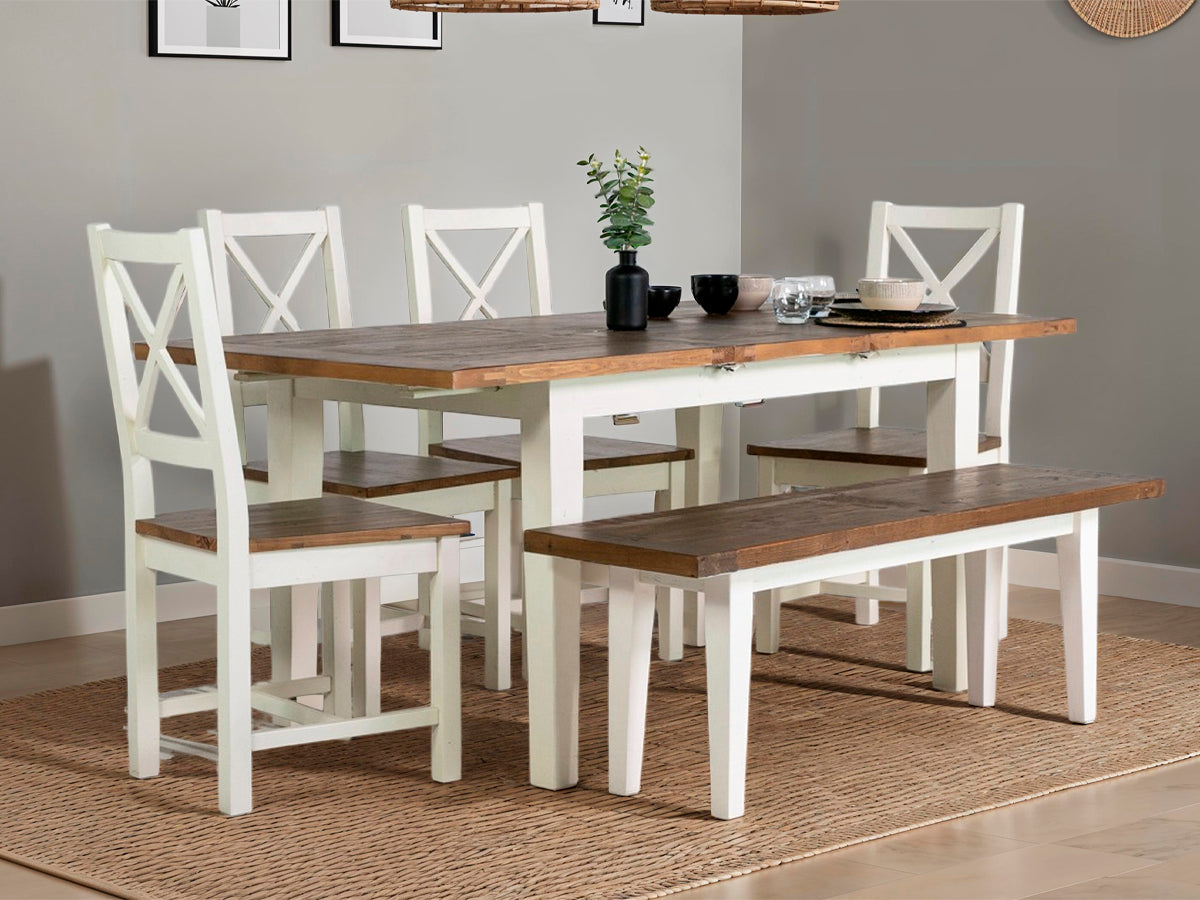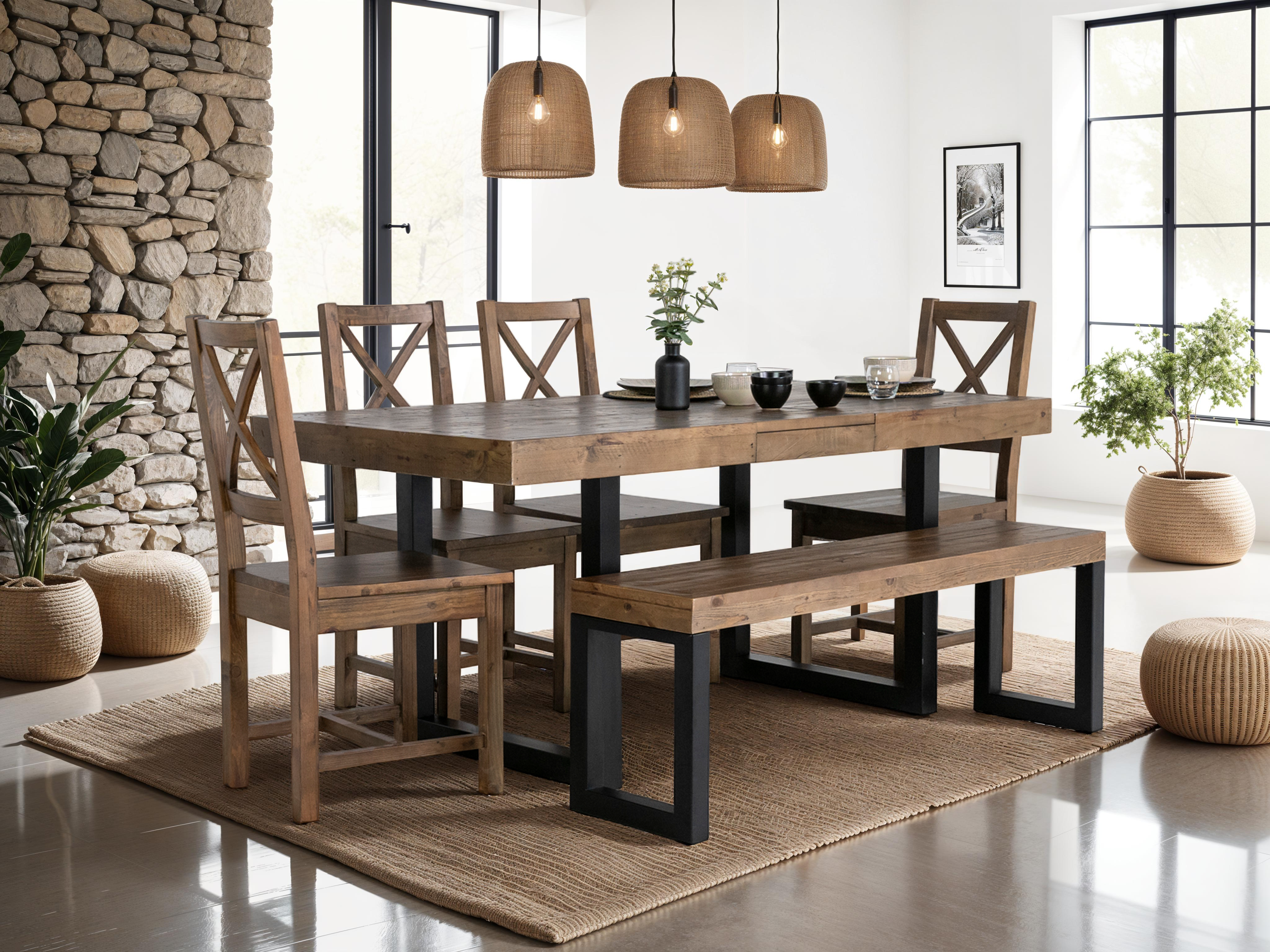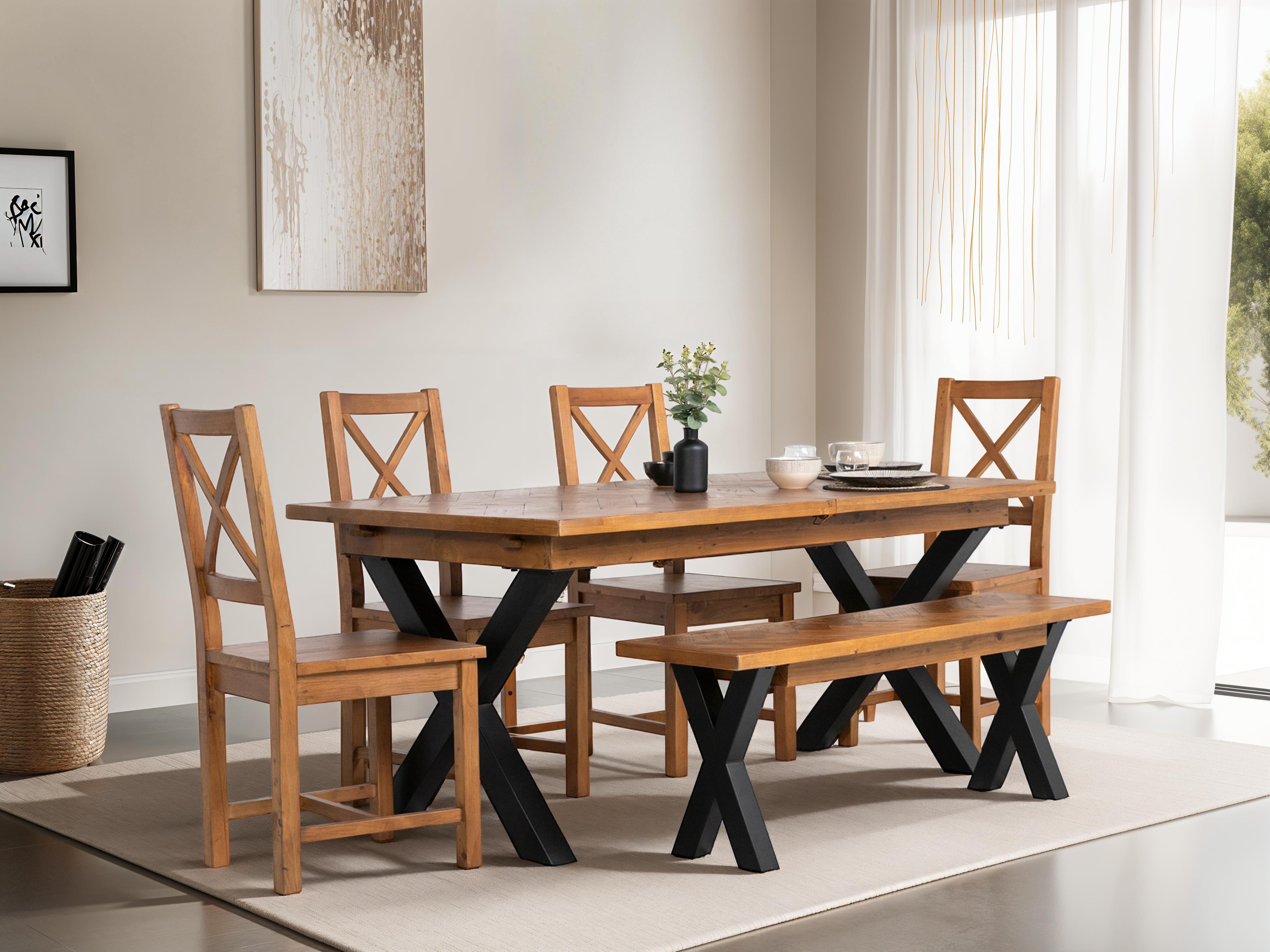In the tapestry of contemporary living, an echo of eco-conscious decisions reverberates through industries, and the furniture sector stands as a testament to this harmonious shift.
At the forefront of this ecological crescendo is the resurgence of interest in reclaimed wood furniture. This essay seeks to delve deeper into the myriad reasons why reclaimed wood furniture, surpassing its visual appeal, emerges as a symphony of sustainability, conducting a profound ode to environmental conservation.
-
Resource Conservation:
Reclaimed wood furniture epitomises the profound ethos of resource conservation. Crafted from a diverse array of salvaged materials, including aged barn wood and repurposed timber, these furnishings embody a commitment to preserving our finite natural resources. By resurrecting discarded wood, manufacturers not only breathe new life into materials but also alleviate the strain on ecosystems, contributing to the mitigation of deforestation and fostering a more sustainable relationship with our planet.
The use of reclaimed wood, with its distinctive grain patterns and rich hues, tells a compelling story of sustainable forestry management. By choosing reclaimed wood furniture, consumers actively participate in the preservation of forests, sending a clear message that responsible sourcing is a priority in their quest for sustainable living.
-
Energy Efficiency:
The creation of reclaimed wood furniture assumes paramount importance in an era focused on mitigating climate change and conserving energy. Traditional furniture production demands an extensive energy footprint, spanning extraction, transportation, and manufacturing processes. Reclaimed wood furniture, however, significantly reduces this demand for energy, embodying a more sustainable alternative that aligns seamlessly with the imperatives of our energy-conscious age.
The intrinsic beauty of reclaimed wood lies not only in its aesthetic appeal but also in the reduced environmental impact associated with its use. The minimal energy required to repurpose and craft reclaimed wood into elegant furniture pieces underscores a commitment to sustainable practices and a lower carbon footprint.
-
Waste Reduction:
Reclaimed wood furniture serves as a potent antidote to the environmental menace of excessive waste. By repurposing and transforming discarded wood, it not only curtails the volume of waste destined for landfills but also pioneers the principles of a circular economy. The cyclical reuse and recycling of wood inherent in reclaimed furniture production symbolise a paradigm shift towards a waste-reduced and resource-efficient future.
The repurposing of reclaimed wood extends beyond waste reduction; it encapsulates a celebration of the material's journey. The knots, burls, and natural imperfections become unique features, adding character to each piece and narrating a story of resilience and longevity.
-
Preservation of History and Character:
Reclaimed wood furniture, with its rich textures and unique patina, weaves a tapestry of history and character. Each piece is a living testament not only to the artistry of craftsmanship but also to the life the wood led before finding a second home in a new creation. In an era dominated by mass-produced homogeneity, reclaimed wood furniture stands as a testament to the preservation of individuality and heritage, fostering a deeper connection between the consumer and the product.
The inherent character of reclaimed wood, with its weathered appearance and distinct markings, speaks volumes about resilience and adaptability. Incorporating reclaimed wood into living spaces not only enhances the aesthetic appeal but also serves as a tangible connection to the past, promoting a sense of appreciation for the enduring beauty of natural materials.
-
Local and Artisanal Impact:
Reclaimed wood furniture production often intersects with local artisans and craftsmen, creating a symbiotic relationship between creativity and sustainability. These skilled individuals bring an artisanal touch to the transformation of reclaimed wood into bespoke creations, contributing to the cultural and economic fabric of local communities. The resurgence of interest in reclaimed wood stimulates economic activity by creating a demand for salvaging, restoring, and repurposing services.
Beyond economic impact, the collaboration with local artisans enhances the diversity and uniqueness of reclaimed wood furniture. Each piece becomes a work of art, reflecting the craftsmanship and creativity of local communities. This emphasis on locality not only reduces the environmental footprint associated with long-distance transportation but also fosters a deeper connection between consumers and the origin of their reclaimed wood furnishings.
-
Carbon Footprint Reduction:
Reclaimed wood furniture, with its inherent reduction of carbon footprints, emerges as a stalwart in the battle against climate change. The traditional furniture industry is fraught with emissions stemming from manufacturing processes, transportation, and the overall life cycle of the product. Opting for reclaimed wood minimises these emissions, aligning with global efforts to combat climate change and ushering in a more sustainable approach to interior design.
The carbon footprint reduction associated with reclaimed wood furniture extends beyond the immediate manufacturing process. It encompasses the entire life cycle, from sourcing materials to product transportation and eventual disposal. As consumers increasingly consider the broader environmental impact of their purchases, the choice of reclaimed wood furniture becomes a tangible way to contribute to a lower-carbon future.
-
Educational Value and Consumer Awareness:
The rise of reclaimed wood furniture brings with it an educational opportunity, igniting a flame of awareness among consumers. Understanding the environmental implications of furniture choices becomes a transformative journey. The narrative embedded in reclaimed wood becomes a conduit for raising consciousness, fostering a deeper appreciation for sustainable practices.
Education and awareness extend beyond the individual consumer to influence broader societal norms and expectations. As more consumers demand sustainable and reclaimed options, the industry responds by integrating these practices into mainstream production. This shift not only aligns with consumer values but also sets a precedent for a more sustainable and responsible approach across the entire furniture sector.
In the grand symphony of sustainable living, reclaimed wood furniture takes centre stage as a virtuoso performer, not merely as a trend but as an indomitable force steering the furniture industry towards a more harmonious future. Beyond its aesthetic allure, each piece of reclaimed wood furniture is a tangible manifestation of resource conservation, energy efficiency, waste reduction, and community empowerment.
As consumers increasingly seek products that resonate with their values, the trajectory of the furniture industry is poised towards a more sustainable and responsible future. The enduring beauty of reclaimed wood harmonises with our collective commitment to a greener planet, creating a resonant melody that echoes through the corridors of environmental stewardship.




















Leave a comment
This site is protected by hCaptcha and the hCaptcha Privacy Policy and Terms of Service apply.